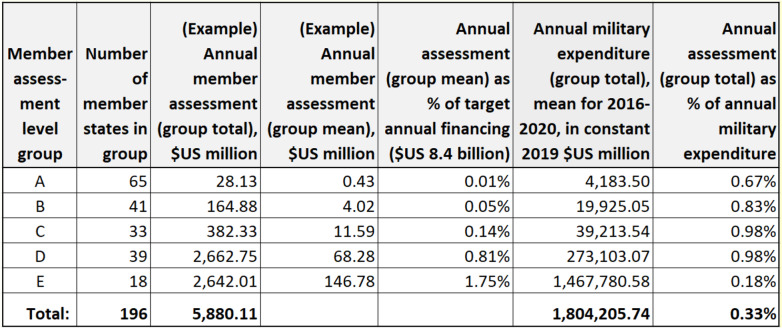Table 2.
A scenario in which structural integrity of WHO financing is restored, with member assessments greatly increased yet not exceeding 1% of military expenditures (For illustrative purposes only)
Data sources: See information accompanying Table 1
Table 2 notes:
1. Table 2 shows that the proposed increase in assessed contributions, within the recommended limits, can be achieved without burdening members with assessments larger than a small fraction of their annual military expenditure
2. This illustration assumes a WHO financing target of $US 16.8 billion biennially ($US 8.4 billion annually), which is triple the 2018–2019 level. It also assumes that member assessments make up 70% of WHO financing (i.e., $US 5.88 billion annually), and that each member’s assessment is restricted to no more than 2% of total financing (i.e., $US 168 million annually), in order to ensure that financial responsibility is equitably distributed. (Refer to recommendations 1, 2, and 4 for details.) In addition, the illustration adheres to an arbitrary constraint that the mean member assessment in each group (A-E) will be no greater than 1% of the group’s mean military expenditure
3. For optimal clarity, this example does not include voluntary contributions from member states or external partners, which would make up the remaining 30% of total WHO financing in this scenario

